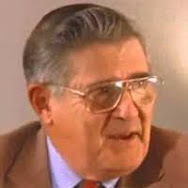“By studying everything that has been thought and written about death throughout history—in all times, cultures, and religions—we may be able to form a different, better picture of death. But the same can be achieved by studying recent scientific research into near-death experience. Evidence has shown that most people lose all fear of death after an NDE. Their experience tells them that death is not the end of everything and that life goes on in one way or another. One patient wrote to me after his NDE: I’m not qualified to discuss something that can only be proven by death. However, for me personally this experience was decisive in convincing me that consciousness endures beyond the grave. Dead turned out to be not dead, but another form of life.
“Current science usually starts from perceptible phenomena. Yet at the same time we can (intuitively) sense that besides objective, sensory perception there is a role for subjective aspects such as feelings, inspiration, and intuition. Current scientific techniques cannot measure or demonstrate the content of consciousness. It is impossible to produce scientific evidence that somebody is in love or that somebody appreciates a certain piece of music or a particular painting. The things that can be measured are the chemical, electric, or magnetic changes in brain activity; the content of thoughts, feelings, and emotions cannot be measured. If we had no direct experience of our consciousness through our feelings, emotions, and thoughts, we would not be able to perceive it.
“Moreover, people must appreciate that their picture of the material world is derived from and constructed solely on the basis of their own perception. There is simply no other way.
“All of us create our reality on the basis of our consciousness. When we are in love the world is beautiful, and when we are depressed that very same world is a torment. The material, ‘objective’ world is merely the picture constructed in our consciousness. People thus preserve their own worldview. This is precisely the kind of idea that a large part of the scientific community has difficulty accepting.
“On the basis of prospective studies of near-death experience, recent results from neurophysiological research, and concepts from quantum physics, I strongly believe that consciousness cannot be located in a particular time and place. This is known [in quantum physics] as nonlocality. Complete and endless consciousness is everywhere in a dimension not tied to time or place, where past, present, and future all exist and are accessible at the same time. This endless consciousness is always in and around us. We have no theories to prove or measure nonlocal space and nonlocal consciousness in the material world. The brain and the body merely function as an interface or relay station to receive part of our total consciousness and part of our memories into our waking consciousness.
“Near-death experience prompted the concept of a nonlocal and endless consciousness, which allows us to understand a wide range of special states of consciousness, such as mystical and religious experiences, deathbed visions (end-of-life experiences), perimortem and postmortem experiences (nonlocal communication), heightened intuitive feelings (nonlocal information exchange), prognostic dreams, remote viewing (nonlocal perception), and the mind’s influence on matter (nonlocal perturbation). Ultimately, we cannot avoid the conclusion that endless consciousness has always been and always will be, independently of the body. There is no beginning and there will never be an end to our consciousness. For this reason we ought to seriously consider the possibility that death, like birth, may be a mere passing from one state of consciousness into another and that during life the body functions as an interface or place of resonance.
Pim van Lommel, Consciousness Beyond Life: The Science of the Near-Death Experience (HarperOne, 2010), v-xviii.










